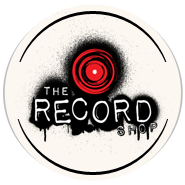The drum-kit is perhaps the most frustrating and time-consuming instrument in terms of recording. If you manage to get it right, the rewards are significant because everyone knows that the core of a fantastic mix is a great drum sound. We have compiled four important drum recording techniques and secrets that we think could help you deal with the challenge of drum recording.
everyone knows that the core of a fantastic mix is a great drum sound. We have compiled four important drum recording techniques and secrets that we think could help you deal with the challenge of drum recording.
Tune the kit
It’s quite unsettling how many people forget to tune their kits before they start drum recording. No drum can produce its optimal sounds unless it has been properly tuned. The skins must be neither too tight nor too slack, and the tension should be even too.
Get your overheads right
It is useful to put a stereo pair in place to check out how the kit sounds and make sure everything is balanced. It is important that you hit the toms with the right intensity and the cymbals with the right frequency so you should fine tune your drumming skills before you even think about getting your overheards right.
Set the mics steep and close
Not everyone agrees on this, but it is often extremely effective to set the mics straight down into the drums at a steep angle of approximately 70 degrees. This way the mics will be able to capture maximum body and weight to the sound. Move the mic around the drum head marginally if you’re not getting your desired results until you find the right spot.
Tune the recording space
Much is often spoken about the importance of tuning instruments, but people often forget that recording spaces also need to be fine-tuned for an optimal result. If the room where you are planning to record your drum has carpeted floors and walls, make sure you make arrangements for some reflective surface such as plywood sheets to place on the walls.
If you want to know more about our drum recording services, visit our Drum Recording page today. What are your drum recording techniques and secrets? Get involved in the discussion below!
